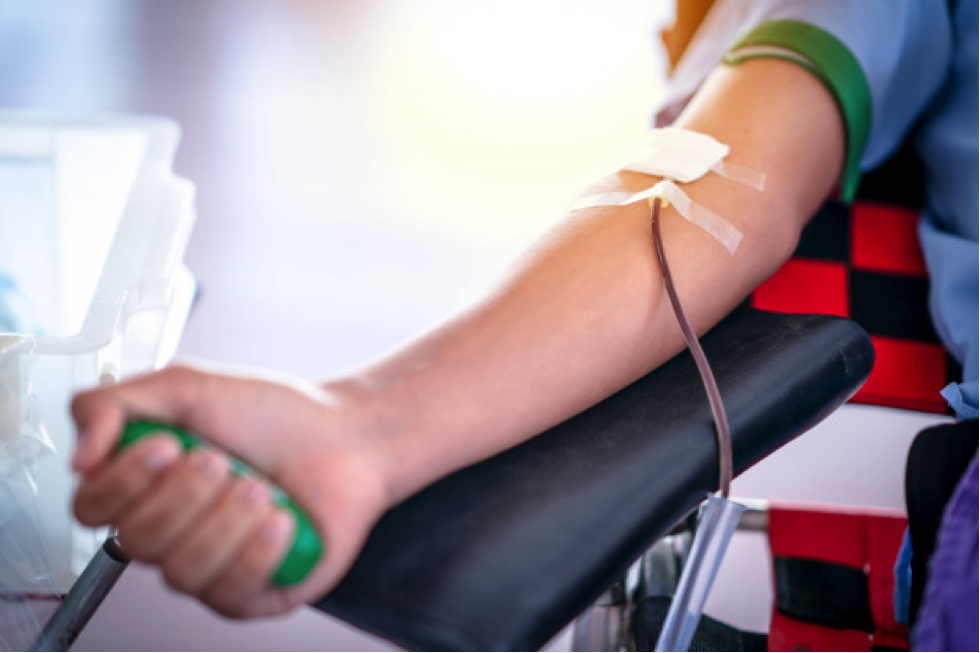
Here’s a list of iron-rich foods to help raise your haemoglobin level this World Blood Donor Day.
14th June, 2019

Today is World Blood Donor day and donating blood, especially in a country like ours, can be life saving. Is your low haemoglobin level holding you back? No worries, we’ve got you covered. All you need to do is include the iron-rich foods mentioned below in your diet and correct your lifestyle—within weeks you’ll find your levels rising, giving you the privileged opportunity of becoming a blood donor.
Iron, a trace mineral (there’s usually only around one teaspoon of the nutrient circulating in our blood at any given time), is a must-have mineral as it helps your bodymake haemoglobin.
Symptoms of iron deficiency include:
- Feeling tired and weak
- Headache
- Constant fatigue
- Difficulty in concentrating
- Shortness of breath
- Decreased working capacity
- Decreased immune function, increasing susceptibility to infection
Haemoglobin is composed of heme + globin, where globin is protein, making it is necessary to have sufficient protein in your diet. A low-protein diet may also cause anaemia.
Iron comes in two forms: heme, the more absorbable of the two, found in red meat, chicken and seafood; and non-heme, found in dark green leafy vegetables and whole grains. The important thing about iron is not only how much you consume, but also how much of it your body absorbs and stores. Unabsorbed iron gets flushed out of the body.
Iron carries oxygen, removing carbon dioxide from muscles and helping them function properly. The body needs iron in order to make proper use of the B vitamins as well.

Lifestyle modification:
- Eat foods rich in iron regularly and keeping the gastrointestinal tract healthy—these are the safest and more potent methods of preventing iron deficiency.
- Different types of anaemia may be due to different causes, however only iron deficiency anemia responds to the supplementary intake of iron.
Include:
- Iron-rich foods with Vitamin C found in fruits and vegetables (e.g. squeezing lime on meat, dals, and vegetables).
- Cooked vegetables, as they can increase the amount of available iron.
- A glass of lime juice with 1 tablespoonof soaked garden cress seeds (haleem seeds).
Avoid:
- Tea, coffee and wine as these bind to the iron in food, carrying it out of the body,hence decreasingthe amount of iron in the body.
- Eating bran with iron-rich foods.
IRON RICH FOODS:
| FOOD | IRON CONTENT(mg) | CALORIES (kcal) |
| PULSES AND LEGUMES (25gms) | ||
| Soyabean | 2.6 | 108 |
| Moth beans | 2.4 | 83 |
| Bengal gram | 2.3 | 92 |
| Cow pea | 2.1 | 81 |
| Dry peas | 1.7 | 79 |
| NUTS AND OILSEED (25gms) | ||
| Garden cress seeds | 25.0 | 82 |
| Niger seed | 14.1 | 77 |
| Sesame | 2.3 | 85 |
| Pistachio | 1.9 | 94 |
| Almonds | 1.2 | 98 |
| CEREALS (25gms) | ||
| Rice flakes | 5.0 | 87 |
| Bajra | 2.0 | 90 |
| Puffed rice | 1.6 | 81 |
| FRUITS (100gms) | ||
| Black currants | 10.5 | 79 |
| Watermelon | 7.9 | 48 |
| Phalsa | 3.1 | 72 |
| Pineapple | 2.6 | 46 |
| Peaches | 2.4 | 50 |
| Cashew nuts | 2.3 | 89 |
| Dates dried | 1.8 | 80 |
| VEGETABLES (100gms) | ||
| Cauliflower greens | 40.0 | 66 |
| Tulip greens | 28.4 | 67 |
| Cowpea leaves (barbati) | 20.1 | 38 |
| Redish greens | 18.0 | 38 |
| Parsley | 17.9 | 44 |
| Shepu (sawa) | 17.4 | 37 |
| Mustard leaves (methi leaves) | 16.3 | 34 |
| Green banana | 6.2 | 64 |


